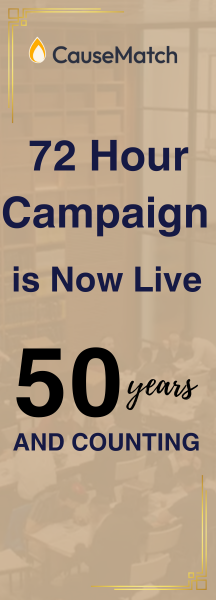Chanuka for Women
From: Jill in Toronto
Dear Rabbi,
What is the special connection of women to Chanuka? In particular, why do women customarily rest or refrain from work while the candles are burning when this candle lighting, as opposed to Shabbat, is done by the men?
The main reason women rest while the candles are burning is because after slaving in the kitchen all day to make latkes and doughnuts, they deserve a break. Just kidding (about the reason that is, not about deserving a break).
The main reason is that as opposed to Shabbat where the women work in preparation and light the candles while the men do nothing to help, on Chanuka the men work to light and the women get a chance to relax. Just kidding (about the reason that is, not about men not helping enough for Shabbat).
And now for the real reason…
The very name of Chanuka implies resting, relaxing or refraining from difficult or mundane tasks. How so? Chanuka can be read as two phrases: ‘Chanu’ and ‘ka’. ‘Chanu’ means “they rested” and ‘ka’ is comprised of the letters ‘kaf’ and ‘hey’ which together have the numerical value of 25. This alludes to the fact that the Jews were relieved of their oppression on the 25th day of the month of Kislev, which is Chanuka.
Although all Jews experienced respite from Hellenistic repression, women in particular experienced a great relief, and also figured prominently in the redemption of Chanuka itself.
But in what way did women particularly suffer and in what manner did they participate in the miracle?
Despite the Greeks’ stated purpose of battling the spirituality of Judaism in the name of “enlightened” Hellenism, one decree in particular was physical: Every Jewish woman who was to be married was to be brought first to the Greek ruler. This very ugly and degrading decree prevented many righteous women from becoming wives, or compromised others before they did.
In this context, the redemption came about through the heroism of a woman. Yehudit, daughter of Yochanan the High Priest and aunt of Judah the Maccabee, was especially beautiful and the tyrant ruler desired her. Pretending to acquiesce, she came to him and first fed him cheese dishes which made him thirsty (the source for eating dairy foods on Chanuka). She then brought him wine to quench his thirst. When he became drunk and fell asleep, she beheaded him and displayed the prize above the city walls. When the enemy soldiers saw the head of their decapitated leader, they fled and the Jews were saved.
It is for this reason, then, that women in particular simultaneously rest and reflect on the relief and redemption that the Chanuka lights reflect. And, by the way, it is similarly for this reason that not only men, but also women have a mitzvah to light the chanukiyah.
The main reason women rest while the candles are burning is because after slaving in the kitchen all day to make latkes and doughnuts, they deserve a break. Just kidding (about the reason that is, not about deserving a break).
The main reason is that as opposed to Shabbat where the women work in preparation and light the candles while the men do nothing to help, on Chanuka the men work to light and the women get a chance to relax. Just kidding (about the reason that is, not about men not helping enough for Shabbat).
And now for the real reason…
The very name of Chanuka implies resting, relaxing or refraining from difficult or mundane tasks. How so? Chanuka can be read as two phrases: ‘Chanu’ and ‘ka’. ‘Chanu’ means “they rested” and ‘ka’ is comprised of the letters ‘kaf’ and ‘hey’ which together have the numerical value of 25. This alludes to the fact that the Jews were relieved of their oppression on the 25th day of the month of Kislev, which is Chanuka.
Although all Jews experienced respite from Hellenistic repression, women in particular experienced a great relief, and also figured prominently in the redemption of Chanuka itself.
But in what way did women particularly suffer and in what manner did they participate in the miracle?
Despite the Greeks’ stated purpose of battling the spirituality of Judaism in the name of “enlightened” Hellenism, one decree in particular was physical: Every Jewish woman who was to be married was to be brought first to the Greek ruler. This very ugly and degrading decree prevented many righteous women from becoming wives, or compromised others before they did.
In this context, the redemption came about through the heroism of a woman. Yehudit, daughter of Yochanan the High Priest and aunt of Judah the Maccabee, was especially beautiful and the tyrant ruler desired her. Pretending to acquiesce, she came to him and first fed him cheese dishes which made him thirsty (the source for eating dairy foods on Chanuka). She then brought him wine to quench his thirst. When he became drunk and fell asleep, she beheaded him and displayed the prize above the city walls. When the enemy soldiers saw the head of their decapitated leader, they fled and the Jews were saved.
It is for this reason, then, that women in particular simultaneously rest and reflect on the relief and redemption that the Chanuka lights reflect. And, by the way, it is similarly for this reason that not only men, but also women have a mitzvah to light the chanukiyah.







